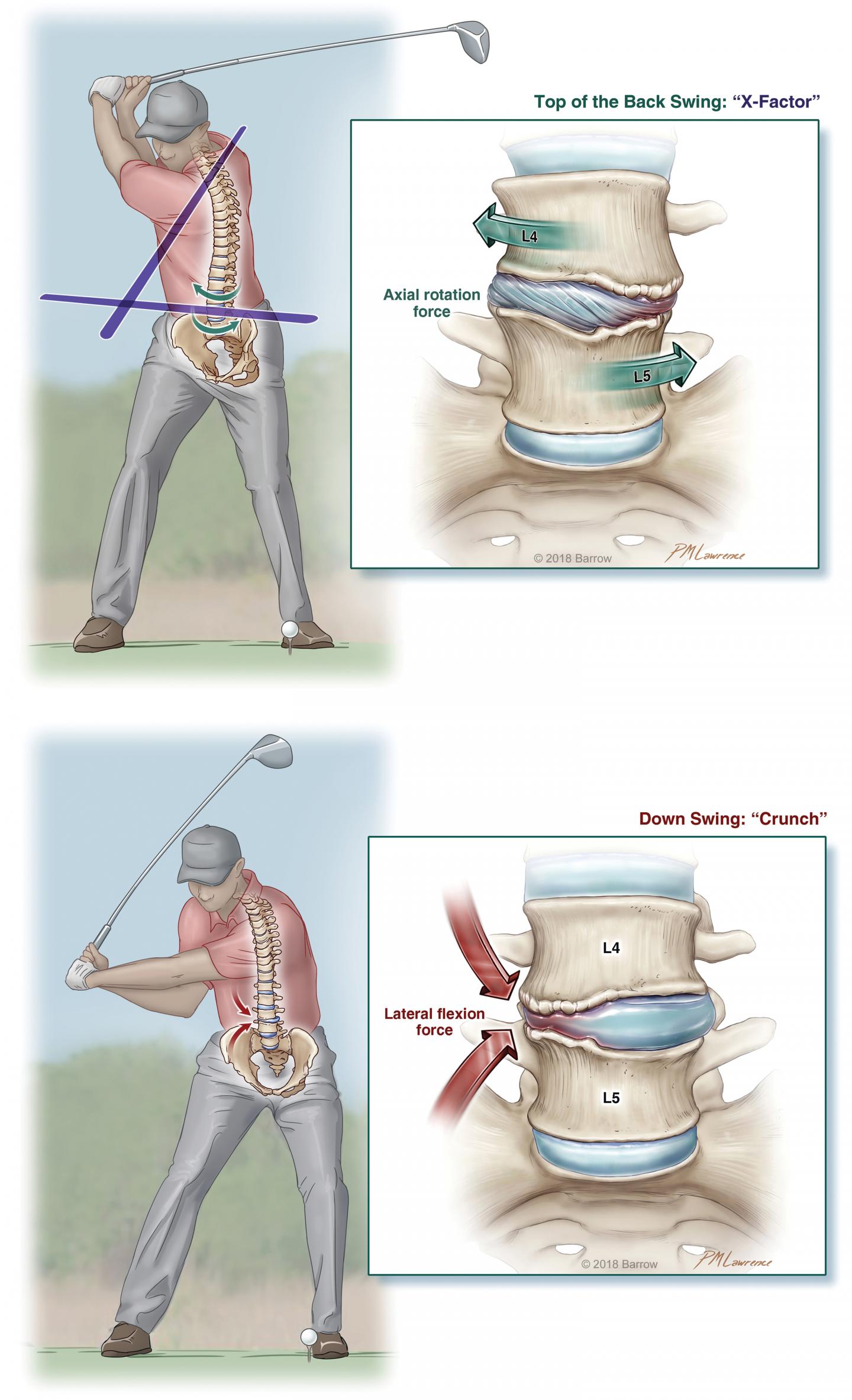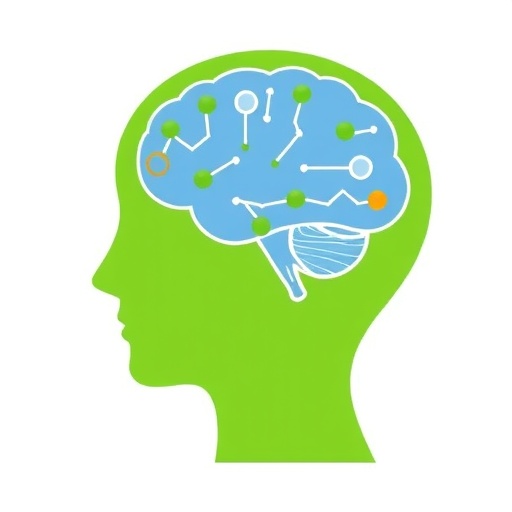How a golf swing can lead to early lumbar degeneration

Credit: © 2018 Barrow Neurological Institute
CHARLOTTESVILLE, VA (FEBRUARY 5, 2019). In the article “Golf: a contact sport. Repetitive traumatic discopathy may be the driver of early lumbar degeneration in modern-era golfers” published today in the Journal of Neurosurgery: Spine, Drs. Corey T. Walker, Juan S. Uribe, and Randall W. Porter from Barrow Neurological Institute describe the biomechanics of modern-era golf and its clinical consequences.
The authors point out that “among professional and amateur golfers, back disorders remain the most common injury, comprising 55% and 35% of injuries in these groups, respectively.” They also note that modern professional golfers are experiencing back problems at far younger ages than the general population. To explain this, they focus on how the golf swing of present-day professionals, such as Tiger Woods, differs from that employed by golf legends Jack Nicklaus and Ben Hogan.
As golf has evolved over the last two decades, the golf swing has become more powerful. To keep up, modern-era professional golf players participate in intensive strength-training sessions. And the techniques of the swing have also changed. During the downswing, greater compressive force is directed toward the spinal disc and facet joints, and this affects these structures asymmetrically. With more than 300 swings per golf-playing day, the golfer repeatedly experiences minor traumatic injuries to the spine, which over time can result in a pathogenic process that the authors have termed “repetitive traumatic discopathy” (RTD).
To illustrate how this can occur, the authors discuss Woods’ years of debilitating spine pain.
In this paper Walker and colleagues discuss modern-day golf swing biomechanics and how they relate to the development of RTD, earlier ages of players exhibiting RTD, and the possibility that golfer’s athletic strength training may contribute to RTD. They also address treatment of patients with this repetitive spinal injury.
When asked about the study, Dr. Walker said, “We believe Tiger Wood’s experience with spinal disease highlights a real and under-recognized issue amongst modern era golfers. Repetitive traumatic discopathy (RTD) results from years of degenerative ‘hits’ or strains on the spine resulting in early onset breakdown, instability, and pain. We hope medical practitioners, and surgeons in particular, will be able to diagnose and treat golfers with RTD in a specialized fashion going forward.”
###
Walker CT, Uribe JS, Porter RW: Golf: a contact sport. Repetitive traumatic discopathy may be the driver of early lumbar degeneration in modern-era golfers. J Neurosurg Spine, published ahead of print February 5, 2019. DOI: 10.3171/2018.10.SPINE181113
Disclosure: Dr. Uribe declares receipt of royalties and consultant fees from Nuvasive Medical, Inc., and consultant fees from SI Bone, Inc., and Misonix Medical, Inc. Dr. Porter reports that he is the founder and owner of The Medical Memory, Inc.
Drs. Walker, Uribe, and Porter are affiliated with the Department of Neurosurgery, Barrow Neurological Institute, St. Joseph’s Hospital and Medical Center in Phoenix; Dr. Porter is also affiliated with the Barrow Golf Rehabilitation Institute in Scottsdale, Arizona
For additional information, contact: Ms. Jo Ann M. Eliason, Communications Manager, JNS Publishing Group, One Morton Drive, Suite 200, Charlottesville, VA 22903; Email [email protected]; Phone 434-982-1209.
The Journal of Neurosurgery: Spine is a monthly peer-reviewed journal focused on neurosurgical approaches to treatment of diseases and disorders of the spine. It contains a variety of articles, including descriptions of preclinical and clinical research as well as case reports and technical notes.
The Journal of Neurosurgery: Spine is one of four monthly journals published by the JNS Publishing Group, the scholarly journal division of the American Association of Neurological Surgeons. Other peer-reviewed journals published by the JNS Publishing Group each month include the Journal of Neurosurgery, Neurosurgical Focus, and the Journal of Neurosurgery: Pediatrics. All four journals can be accessed at http://www.
Founded in 1931 as the Harvey Cushing Society, the American Association of Neurological Surgeons (AANS) is a scientific and educational association with more than 10,000 members worldwide. The AANS is dedicated to advancing the specialty of neurological surgery in order to provide the highest quality of neurosurgical care to the public. All active members of the AANS are certified by the American Board of Neurological Surgery, the Royal College of Physicians and Surgeons (Neurosurgery) of Canada or the Mexican Council of Neurological Surgery, AC. Neurological surgery is the medical specialty concerned with the prevention, diagnosis, treatment and rehabilitation of disorders that affect the entire nervous system including the brain, spinal column, spinal cord, and peripheral nerves. For more information, visit http://www.
Media Contact
Jo Ann M. Eliason
[email protected]
434-982-1209
Related Journal Article
http://dx.




